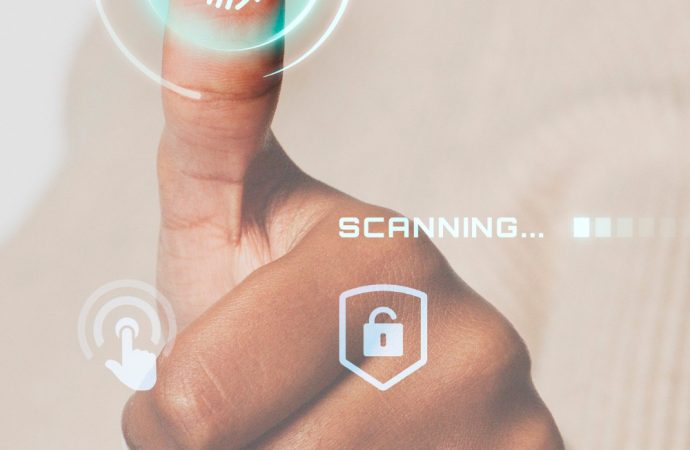Introduction to Windows Hello Biometrics Hello biometrics authentication feature of Windows Hello is an advanced biometric authentication solution provided by Microsoft to strengthen security measures in businesses. Fingerprint matching is employed and the recognition of faces to deliver multi-factor authentication, ensuring protection against potential spoofing attempts. How Windows Hello Biometrics Works Windows Hello enables
Introduction to Windows Hello Biometrics
Hello biometrics authentication feature of Windows Hello is an advanced biometric authentication solution provided by Microsoft to strengthen security measures in businesses. Fingerprint matching is employed and the recognition of faces to deliver multi-factor authentication, ensuring protection against potential spoofing attempts.
How Windows Hello Biometrics Works
Windows Hello enables employees to use fingerprint, employees have the option to unlock their devices securely using facial recognition or iris recognition. It gives an added safeguard by guaranteeing that only authorized persons can reach the device. The process of authentication happens when employees provide their unique biometric identifiers. This grants them access to the device-specific Windows Hello credentials. Notably, Windows Hello authentication does not roam among devices and is never shared with a server. This guarantees top-level security.

Image by rawpixel.com on Freepik
Advantages of Windows Hello for Employees
Embracing Windows Hello offers numerous benefits to both enterprises and their employees:
Strengthened Protection: Windows Hello significantly reduces the risk of credential theft. Both the device is needed by an attacker the biometric data or PIN of the employee to achieve unauthorized access.
Employees enjoy a user-friendly and secure authentication method, removing the requirement to recall complicated passwords. Windows Hello is backed up with a PIN for added security.
Seamless Integration: Windows Hello support is built into the operating system, allowing enterprises to add additional biometric devices and policies through coordinated rollouts or by utilizing Group Policy and Mobile Device Management configurations. With this feature, organizations can effortlessly improve their security measures and optimize authentication processes.
Safety of Biometric data of Windows Hello Records
A major benefit of Windows Hello involves the storage of biometric data on the device. This data does not roam or get sent to external servers. It becomes hard for potential intruders to infiltrate a lone data collection site and snatch biometric records.
Every sensor on a device keeps its own biometric database file that has encrypted template data. This data is protected by an exclusive and randomly created key, ensuring the utmost security. Moreover, even if a hacker succeeds in obtaining the biometric data, it cannot be converted back into a raw sample recognizable by the biometric sensor. This provides the protection and safeguarding of the user’s biometric records.
Requirements for the device for Windows Hello Biometrics
Microsoft has collaborated with device manufacturers to define rigorous benchmarks for performance and protection for Windows Hello biometric devices. Consequently, users can rely on the trustworthiness and protection of these devices. The specified requirements guarantee a strong level of security and dependability. Here are the key requirements for fingerprint, facial recognition, and iris recognition sensors:
Fingerprint Sensor Requirements:
Acceptable Performance Range for Small to Large Touch Sensors:
False Accept Rate (FAR): <0.001 – 0.002%
Effective, Real-world FRR with Anti-spoofing or Liveness Detection: <10%
Acceptable Performance Range for Swipe Sensors:
False Accept Rate (FAR): <0.002%
Effective, Real-world FRR with Anti-spoofing or Liveness Detection: <10%
Facial Recognition Sensor Requirements:
False Accept Rate (FAR): <0.001%
False Reject Rate (FRR) without Anti-spoofing or Liveness Detection: <5%
Effective, Real-world FRR with Anti-spoofing or Liveness Detection: <10%
Iris Recognition Sensor Requirements:
Iris authentication is available on HoloLens 2 devices having a biometric security FAR of 1/100K. It is implemented similarly to other Windows Hello technologies.
It is important to note that Enrollment or authentication with Windows Hello face does not currently allow wearing a mask. This has because of safety issues. It’s essential to remove a mask when enrolling or unlocking the device with Windows Hello face authentication. Nonetheless, it is vital to highlight that this condition might differ based on the particular device and its facial recognition technology capabilities.
Conclusion,
The Windows Hello biometrics system revolutionizes in terms of enterprise security. It ensures powerful defense against unauthorized intrusion while providing employees with a user-friendly and efficient authentication method. With data stored locally on devices and strict device requirements, For organizations seeking to strengthen their security measures, Windows Hello is a reliable solution. Embrace the strength of Windows Hello biometrics and boost your enterprise security to greater levels.

















Leave a Comment
Your email address will not be published. Required fields are marked with *